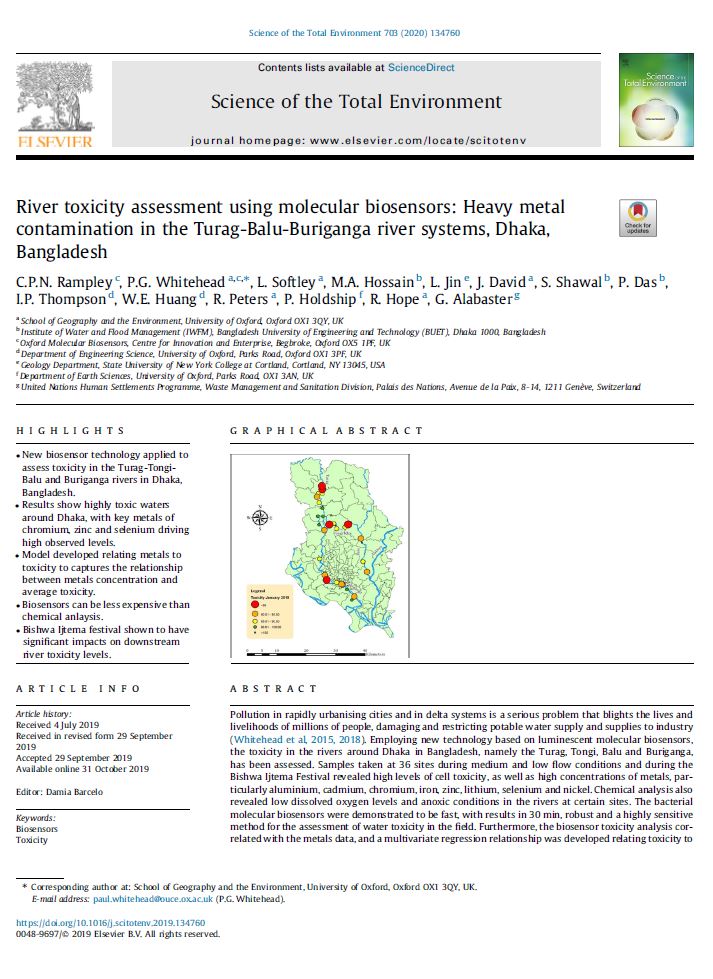Authors: Cordelia Rampley, Paul Whitehead, Lorna Softley, Md. Abed Hossain, Li Jin, Shammi Shawal, Partho Das, Ian Thompson, Wei Huang, Rebecca Peters, Phil Holdship, Rob Hope, and Graham Alabaster
Pollution in rapidly urbanising cities and in delta systems is a serious problem that blights the lives and livelihoods of millions of people, damaging and restricting potable water supply and supplies to industry (Whitehead et al, 2015, 2018). Employing new technology based on luminescent molecular biosensors, the toxicity in the rivers around Dhaka in Bangladesh, namely the Turag, Tongi, Balu and Buriganga, has been assessed. Samples taken at 36 sites during medium and low flow conditions and during the Bishwa Ijtema Festival revealed high levels of cell toxicity, as well as high concentrations of metals, particularly aluminium, cadmium, chromium, iron, zinc, lithium, selenium and nickel. Chemical analysis also revealed low dissolved oxygen levels and anoxic conditions in the rivers at certain sites.

